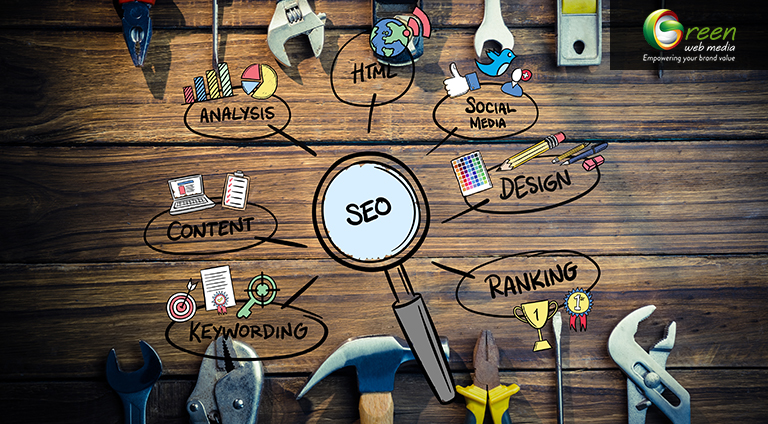Navigating the SEO Landscape in 2024: Strategies for Success in the Age of AI

Google’s algorithm, once reliant on predefined rules and keyword matching, now incorporates machine learning and advanced AI components. This evolution enables Google to go beyond simple keyword matching and comprehend the deeper context and intent behind user queries.
Google’s algorithm learns from user behaviour and continuously refines its understanding of what constitutes valuable content. This adaptability is particularly evident in how search results are ranked and displayed. Ultimately, the algorithm becomes more adept at recognizing patterns and delivering relevant results.
This post aims to shed light on the current state of SEO in 2024, delving into crucial topics such as:
- The integration of AI into Google’s search algorithm.
- Google’s perspective on AI-generated content.
- The enhanced recognition of backlink quality through SpamBrain AI.
- The shift towards user behavioural factors as indicators of content quality and ranking.
- Updates to Google’s helpful content system.
- Changes in Google’s indexing approach, notably the significant reduction in indexed content.
- The implications of search algorithm change on technical SEO.
Chapter 1: The Role of AI in Google’s Search Algorithm
For SEO professionals, staying ahead in this AI-dominated landscape requires a fundamental shift in approach. The days of static optimization strategies are behind us. Instead, the emphasis is on creating dynamic, user-focused content that aligns with the evolving capabilities of Google’s algorithm.
- User-Centric Content: You can prioritize content that addresses user intent and provides value. Understand the questions users are asking and create content with the help of AI tools that comprehensively answers those queries.
- Semantic SEO: Embrace semantic SEO by incorporating related terms and contextually relevant keywords. This aligns with Google’s focus on understanding the broader meaning behind user queries.
- Adaptability: It is a good idea to stay agile in your SEO strategies with AI. Regularly monitor algorithm updates and be prepared to adjust your approach based on evolving AI capabilities.
User Experience Enhancement: As AI places increased importance on user behaviour, you need to prioritize enhancing the overall user experience on your website. This includes mobile optimization with faster page load times and intuitive navigation.

Chapter 2: Google’s View on AI-Generated Content
As Artificial Intelligence assumes an increasingly prominent role in content creation, SEO professionals must navigate the fine line with care. They must leverage automation for efficiency and avoid practices that may raise red flags in the eyes of Google’s algorithms.
Google’s Stance on AI-Generated Content
Google acknowledges the growing use of AI in content creation but places a significant emphasis on maintaining quality and relevance. The search giant’s algorithms are designed to evaluate content based on various criteria, and understanding Google’s perspective on AI-generated content is crucial for SEO success.
Best Practices for Leveraging AI in Content Creation
As AI becomes a valuable ally in the content creation process, adopting best practices ensures that your content remains in Google’s good graces.
- Supervision and Review
AI tools are powerful, but they still benefit from human oversight. It will help if you regularly review and refine the output of AI-generated content to ensure it always aligns with your brand voice, style, and quality standards. - Value-Driven Content Creation
Focus on creating content that often adds value to your consumers. Whether human or AI-generated, content should address user intent, answer queries, and provide meaningful information. - Avoiding Duplicate or Thin Content
One pitfall to watch out for is the generation of duplicate or thin content. For this you need to ensure that AI tools are not creating redundant information. Also, make sure that each piece of content contributes uniquely to your website.

Chapter 3: Enhanced Link Quality Detection with SpamBrain AI
Traditionally, link building focused on quantity, with the sheer number of backlinks often seen as a key indicator of a website’s authority. However, Google’s evolution, particularly with the introduction of SpamBrain AI in 2018, emphasizes the importance of quality over quantity.
SpamBrain AI: A Paradigm Shift
SpamBrain AI is Google’s sophisticated tool designed to combat spam and enhance the overall quality of search results. Its machine-learning capabilities enable it to discern between genuine, high-quality links and those generated through manipulative or spammy tactics.
Strategies for Success in the AI Era of Link Building
- Natural Link Growth
Embrace a natural and organic approach to link building. Instead of resorting to shortcuts or manipulative tactics, focus on creating content that naturally attracts high-quality backlinks. Genuine links from authoritative sources carry more weight in the eyes of SpamBrain AI. - Diversification of Anchor Texts
SpamBrain AI is adept at recognizing patterns, including over-optimized anchor texts. Diversify your anchor texts to appear more natural and avoid triggering spam filters. This not only enhances the credibility of your link profile but also aligns with the user-friendly experience Google aims to provide.
Here, it is prudent to be transparent about your link-building practices. Authenticity not only contributes to a positive user experience but also aligns with Google’s goal of fostering a web ecosystem based on trust.

Chapter 4: User Behavioral Factors as Quality Indicators
User behaviour has become a cornerstone in determining the quality and relevance of content. Google’s AI algorithms analyze various user interactions to gauge the effectiveness of a webpage in fulfilling user intent.
Analysis of Dwell Time, Bounce Rate, and Page Exploration
Metrics such as click-through rates, dwell time, and bounce rates are now crucial indicators of content quality. A high click-through rate suggests that the content resonates with users, while a prolonged dwell time indicates engagement. Conversely, a high bounce rate might signal a mismatch between user expectations and the content provided.
This shift in focus from static metrics to dynamic user behaviour highlights the importance of crafting content that not only attracts users but also holds their attention. SEO strategies should prioritize understanding user intent and delivering content that fulfils those expectations, ensuring positive behavioural signals that contribute to higher rankings.
Chapter 5: User Experience Optimization (UXO) in SEO
User Experience Optimization goes beyond aesthetics; it encapsulates the overall satisfaction and engagement users derive from interacting with a website. Google wants to provide the best possible results to users and considers only the quality of the user experience as a critical SEO ranking factor.
Page Load Speed: A Need for Speed
Google places immense importance on page load speed as part of the user experience. A swift-loading website not only enhances user satisfaction but also aligns with Google’s goal of delivering information quickly and efficiently.
Mobile Responsiveness: A Mobile-First Approach
With the increasing prevalence of mobile devices, Google has shifted to a mobile-first indexing approach. Websites that are mobile-responsive and provide a seamless experience across devices are favoured in search rankings.
Future-Proofing with UXO
As technology and user expectations evolve, adopting a proactive approach to UXO becomes a strategy for future-proofing your website’s SEO performance.

Chapter 6: E-A-T and Brand Building in SEO
Expertise, Authoritativeness, and Trustworthiness (E-A-T) are now fundamental aspects of Google’s assessment of webpages. Building a brand that embodies these principles is essential for SEO success.
Expertise involves showcasing a deep understanding of the subject matter, Authoritativeness establishes credibility, and Trustworthiness fosters user confidence. Google’s algorithms increasingly prioritize content from authoritative sources to ensure users receive reliable information.
Strategies for E-A-T and Brand Building
- In-Depth Author Profiles
Create comprehensive author profiles for your content creators, highlighting their expertise and credentials. This is particularly important for websites that produce content related to health, finance, or any field requiring specialized knowledge. - Backlink Strategies
Strategically build backlinks from reputable sources within your industry. Collaborate with influencers and thought leaders to enhance your brand’s authority and trustworthiness. - Transparent Communication
Transparently communicate your brand’s values, mission, and commitment to users. Clear communication builds trust, fostering a positive relationship between your brand and your audience.

Chapter 7: Evolution of Link Building in the AI Era
In the AI era, the emphasis on link quality over quantity is more pronounced than ever. While a high number of backlinks was once considered a sign of authority, AI algorithms, such as SpamBrain AI, are adept at distinguishing between genuine, high-quality links and manipulative link-building tactics.
Strategies for Successful Link Building in the AI Era
- Content-Centric Link Building
Create compelling, shareable content that naturally attracts backlinks. The AI era rewards content that resonates with users and aligns with their search intent. Infographics, in-depth articles, and multimedia content can be powerful link magnets. - Collaborate with Influencers and Thought Leaders
Leverage relationships with influencers and thought leaders in your industry. AI algorithms recognize authoritative endorsements, and links from reputable figures can significantly boost your website’s credibility. - Natural Link Growth Strategies
Focus on organic and natural link growth. AI algorithms, including SpamBrain AI, can identify patterns associated with manipulative link-building techniques. Genuine, naturally acquired links are more likely to withstand algorithmic scrutiny.
The Future of Link Building with AI
As AI continues to develop, the future of link-building will likely see more sophisticated algorithms that can discern even subtler patterns. Staying ahead requires a commitment to user-centric, valuable content and ethical link-building practices.

Chapter 8: Evolving Importance of Technical SEO
Ensuring that search engine crawlers can effectively navigate and index your website is fundamental. This involves optimizing robots.txt files and implementing clean, organized sitemaps, which are all part of technical SEO.
Emerging Trends in Technical SEO
- Core Web Vitals and User Experience Metrics
Google’s Core Web Vitals, including metrics like Largest Contentful Paint (LCP) and Cumulative Layout Shift (CLS), are now integral to search rankings. Prioritizing user-centric metrics enhances both user experience and search visibility. - Structured Data and Schema Markup
Structured data and schema markup provide context to search engines, enabling them to better understand the content on a webpage. This not only enhances the presentation of search results but also contributes to rich snippets and featured snippets. - Voice Search Optimization
As voice search continues to rise, adapting content and technical elements for natural language queries becomes crucial. Technical SEO strategies should align with the conversational nature of voice searches.As websites become more complex, advanced crawling and rendering techniques will be essential. SEO professionals will need to understand how search engine bots interpret JavaScript and AJAX to ensure proper indexing.

Chapter 9: Expanding Content Quality Factors
Search engines, particularly Google, prioritize content that demonstrates expertise, authoritativeness, and trustworthiness (E-A-T). Creating comprehensive, well-researched, and authoritative content is fundamental to content quality in the modern SEO landscape.
Diversifying content with multimedia elements, including images, infographics, and videos, enhances user engagement. Rich media not only makes content more appealing but also caters to different learning styles, contributing to a positive user experience.
User-Intent Optimization
Aligning content with user intent is pivotal. Understanding the searcher’s intent behind a query and tailoring content to fulfil that intent ensures your content meets the expectations of users, contributing to higher rankings.
Strategies for Content Quality Excellence
- Keyword Research and Semantic SEO
While keywords remain relevant, the focus has shifted towards semantic SEO. Understanding user intent and incorporating contextually relevant terms in your content ensures it aligns with the intricacies of modern search algorithms. - Content Refresh and Updates
Regularly refreshing and updating existing content keeps it relevant. Google values fresh, up-to-date information, and content that reflects the latest trends or developments in a topic is more likely to maintain or improve its rankings.

Chapter 10: Strategic Content Indexing Approach
Google employs sophisticated crawlers to index web content efficiently. Optimizing your website’s structure, utilizing sitemaps, and managing crawl budgets contribute to enhanced crawling efficiency.
Strategic use of “no index” and “no follow” directives in your website’s meta tags instructs search engines to exclude specific pages or links from indexing. This can be useful for preventing the indexing of duplicate content or pages with low value.
Balancing Quantity, Quality, and Relevance in Content Marketing
- Strategic Keyword Targeting
While keyword stuffing is a thing of the past, strategic keyword targeting remains crucial. Align keywords with user intent and contextually integrate them into your content to enhance relevance. - Diverse Content Formats
Diversifying content formats, including articles and interactive elements, cater to varied audience preferences. This not only broadens your content’s appeal but also contributes to a comprehensive user experience. - Content Pruning
Regularly assess and prune outdated or low-performing content. This will help declutter your website to a great extent. It also ensures that the content you present to users and search engines remains fresh and relevant.The future may see advancements in AI-driven indexing, where algorithms become more adept at various factors. These include understanding and categorizing content based on context, user intent, and even sentiment.

Chapter 11: Tips and Best Practices for SEO Success in 2024
1. Embrace AI Integration
As AI gets a pivotal role in search engine algorithms, embrace its integration into your SEO strategies. Explore AI tools for content creation, leverage machine learning for predictive analytics, and stay informed about the latest advancements shaping the SEO landscape.
2. Enhance Mobile Experience
Given the prevalence of mobile devices, prioritize a seamless mobile experience. Ensure your website is not only mobile-responsive but also designed with a mobile-first mindset. Google’s mobile-first indexing prioritizes mobile-friendly websites in search rankings.
3. Content Refresh and Updates
Regularly refresh and update existing content to keep it relevant. Google values fresh, up-to-date information, and updating your content can contribute to maintaining or improving its search rankings.
4. Strategic Internal Linking
Strategically use internal linking to guide users through your website and help search engines understand the relationships between different pages. Thoughtful internal linking enhances content discoverability.
5. Maintain a Consistent Brand Voice
Consistency in brand messaging builds trust with users and reinforces your brand’s identity. Ensure that your brand’s core remains consistent across various channels and types of content.
6. Engage in Social Media and Community Building
An active social media image can contribute to your content’s visibility. Encourage community engagement and user-generated content to foster a sense of community around your brand.
7. Adopt Ethical SEO Practices
Prioritize ethical SEO practices. Avoid engaging in link schemes, duplicate content, or other manipulative tactics that may lead to penalties. Transparency and authenticity are prominent in building trust with both users and search engines.
Parting thoughts
As we navigate the SEO landscape in 2024, it’s evident that the domain of search engine optimization is in a perpetual state of evolution. The integration of AI into Google’s algorithms has brought about profound changes, emphasizing the need for adaptability, innovation, and a user-centric mindset.
From understanding the intricacies of AI-driven algorithms to navigating the evolving importance of technical SEO, this comprehensive guide has explored the strategies and best practices required for success in the dynamic digital arena.
As we peer into the future, the recommendations outlined in this guide emphasize the importance of staying ahead of the curve. From embracing AI-generated content collaborations to considering the impact of blockchain on content authenticity, the future of SEO promises to be shaped by technological advancements and innovative approaches.





